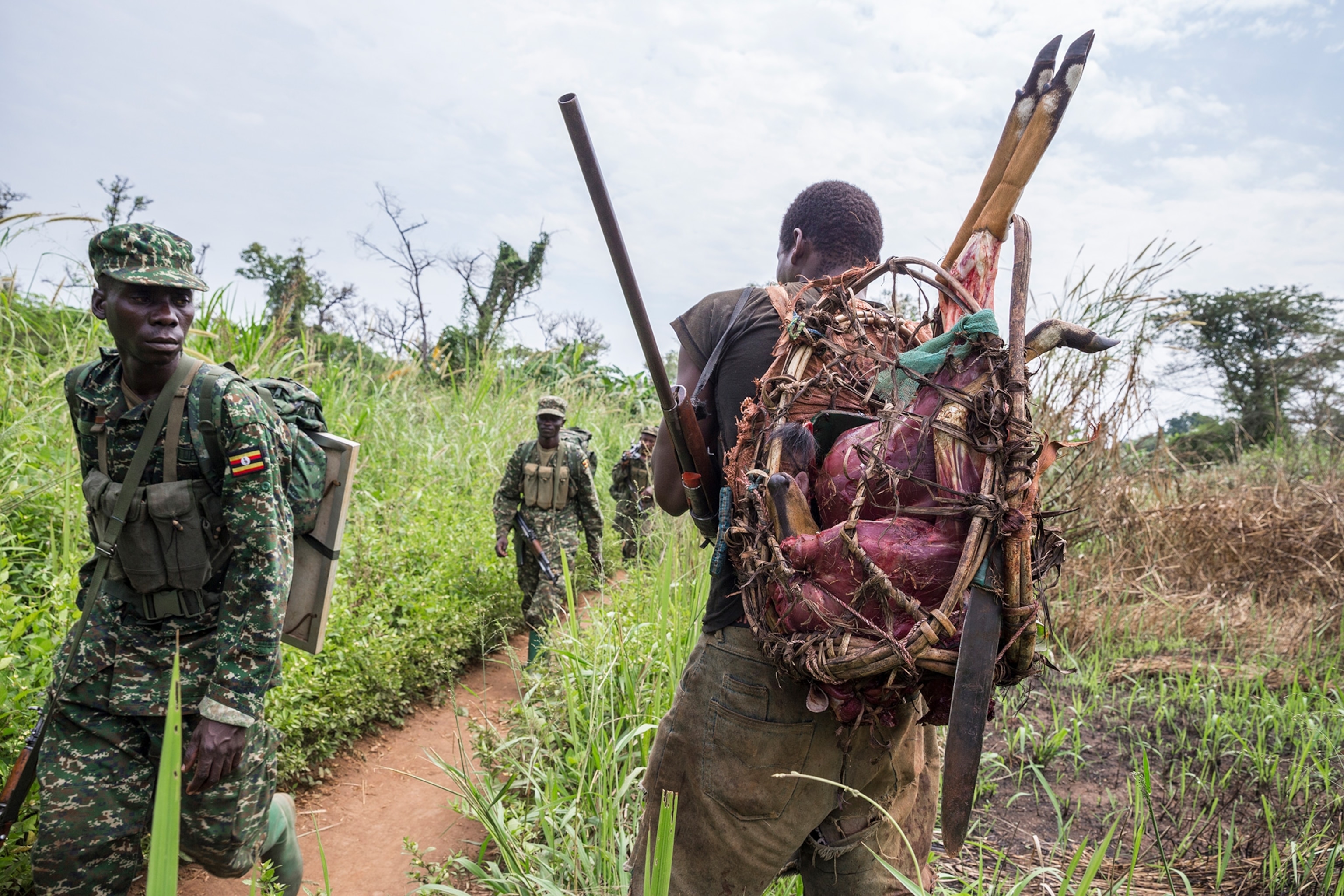Bushmeat is a catchall phrase for the meat of wild animals, but it most often refers to the remains of animals killed in the forests and savannas of Africa.
African people have long hunted bats, monkeys, rats, snakes, and other wild animals for sustenance. Smoked, dried, or cooked, the meat provides a valuable source of protein for people in rural communities where farming domesticated animals is too expensive or impractical. Hunting and selling bushmeat can also serve as an important source of income.
But the scale of hunting is far greater today and has been increasing, facilitated by road building in the forest for logging and mining operations and fueled by growing demand in urban markets, where comparatively well-off customers consider wild-sourced protein a delicacy and a status symbol. A smaller international market for exotic meat thrives in Europe and the United States.
As hunting becomes more widespread, risks to the environment and public health become grave.
Conservation concerns
Although no one keeps track of how much bushmeat is hunted in total, conservation experts estimate that up to six million tons of bushmeat are taken from the Amazon and the Congo Basin each year. Hunting for bushmeat is considered one of the most immediate threats to African wildlife.
Conservationists are especially concerned about the large-scale commercial hunting of slower-breeding species like apes and monkeys. On Bioko Island, off the coast of Equatorial Guinea, for example, hunting for bushmeat has decimated populations of the island’s seven endemic monkey species, which are all endangered.
Even forest elephants, considered vulnerable to extinction, are targeted for their meat in parts of central Africa. It’s possible that the meat is a primary motivation for the hunters and that the elephant’s tusks, hacked off for the more-publicized ivory trade, are a mere byproduct.
Threat of viral outbreak
Wild animals are reservoirs for pathogens, and people who come in contact with their bodily fluids risk becoming infected with a zoonotic disease—a disease that jumps from animals to humans. People most at risk are hunters, those who prepare bushmeat, and consumers of undercooked bushmeat (cooking meat all the way through kills the pathogens).
Researchers believe, for example, that bonobos, chimpanzees, and other primates spread HIV to people hunting or butchering them. Fruit bats were also the likely source of the Ebola epidemic in western Africa that killed more than 11,000 people between 2014 and 2016.
Combating the bushmeat trade
Education campaigns are raising awareness about health and ecological risks associated with the bushmeat trade. And there are efforts to help those who rely on bushmeat to develop alternative sources of protein and income, such as farming cane rats and beekeeping.
There are laws to stymie the trade, many of which have exemptions for indigenous communities that rely on small-scale hunting of bushmeat for subsistence. Countries have rules surrounding the export and import of wild game, and an international treaty prohibits or limits global commercial trade in vulnerable wildlife.
Although many countries in Africa ban hunting of threatened species and require hunters and bushmeat vendors to purchase permits, researchers and conservationists say that lax enforcement has enabled the bushmeat trade to thrive.
Related Topics
Go Further
Animals
- These are the weird reasons octopuses change shape and colorThese are the weird reasons octopuses change shape and color
- Why young scientists want you to care about 'scary' speciesWhy young scientists want you to care about 'scary' species
- What rising temperatures in the Gulf of Maine mean for wildlifeWhat rising temperatures in the Gulf of Maine mean for wildlife
- He’s called ‘omacha,’ a dolphin that transforms into a man. Why?He’s called ‘omacha,’ a dolphin that transforms into a man. Why?
- Behind the scenes at America’s biggest birding festivalBehind the scenes at America’s biggest birding festival
Environment
- What rising temperatures in the Gulf of Maine mean for wildlifeWhat rising temperatures in the Gulf of Maine mean for wildlife
- He’s called ‘omacha,’ a dolphin that transforms into a man. Why?He’s called ‘omacha,’ a dolphin that transforms into a man. Why?
- The northernmost flower living at the top of the worldThe northernmost flower living at the top of the world
- This beautiful floating flower is wreaking havoc on NigeriaThis beautiful floating flower is wreaking havoc on Nigeria
- What the Aral Sea might teach us about life after disasterWhat the Aral Sea might teach us about life after disaster
History & Culture
- Scientists find evidence of ancient waterway beside Egypt’s pyramidsScientists find evidence of ancient waterway beside Egypt’s pyramids
- This thriving society vanished into thin air. What happened?This thriving society vanished into thin air. What happened?
Science
- Extreme heat can be deadly – here’s how to know if you’re at riskExtreme heat can be deadly – here’s how to know if you’re at risk
- Why dopamine drives you to do hard things—even without a rewardWhy dopamine drives you to do hard things—even without a reward
- What will astronauts use to drive across the Moon?What will astronauts use to drive across the Moon?
- Oral contraceptives may help lower the risk of sports injuriesOral contraceptives may help lower the risk of sports injuries
- How stressed are you? Answer these 10 questions to find out.
- Science
How stressed are you? Answer these 10 questions to find out. - Does meditation actually work? Here’s what the science says.Does meditation actually work? Here’s what the science says.
Travel
- Going on a cruise? Here’s how to stay healthy onboardGoing on a cruise? Here’s how to stay healthy onboard
- What to see and do in Werfen, Austria's iconic destinationWhat to see and do in Werfen, Austria's iconic destination
- How to get front-row seats to an active volcano in GuatemalaHow to get front-row seats to an active volcano in Guatemala
- Urban wine is making a comeback in Paris. Here's how to try itUrban wine is making a comeback in Paris. Here's how to try it





